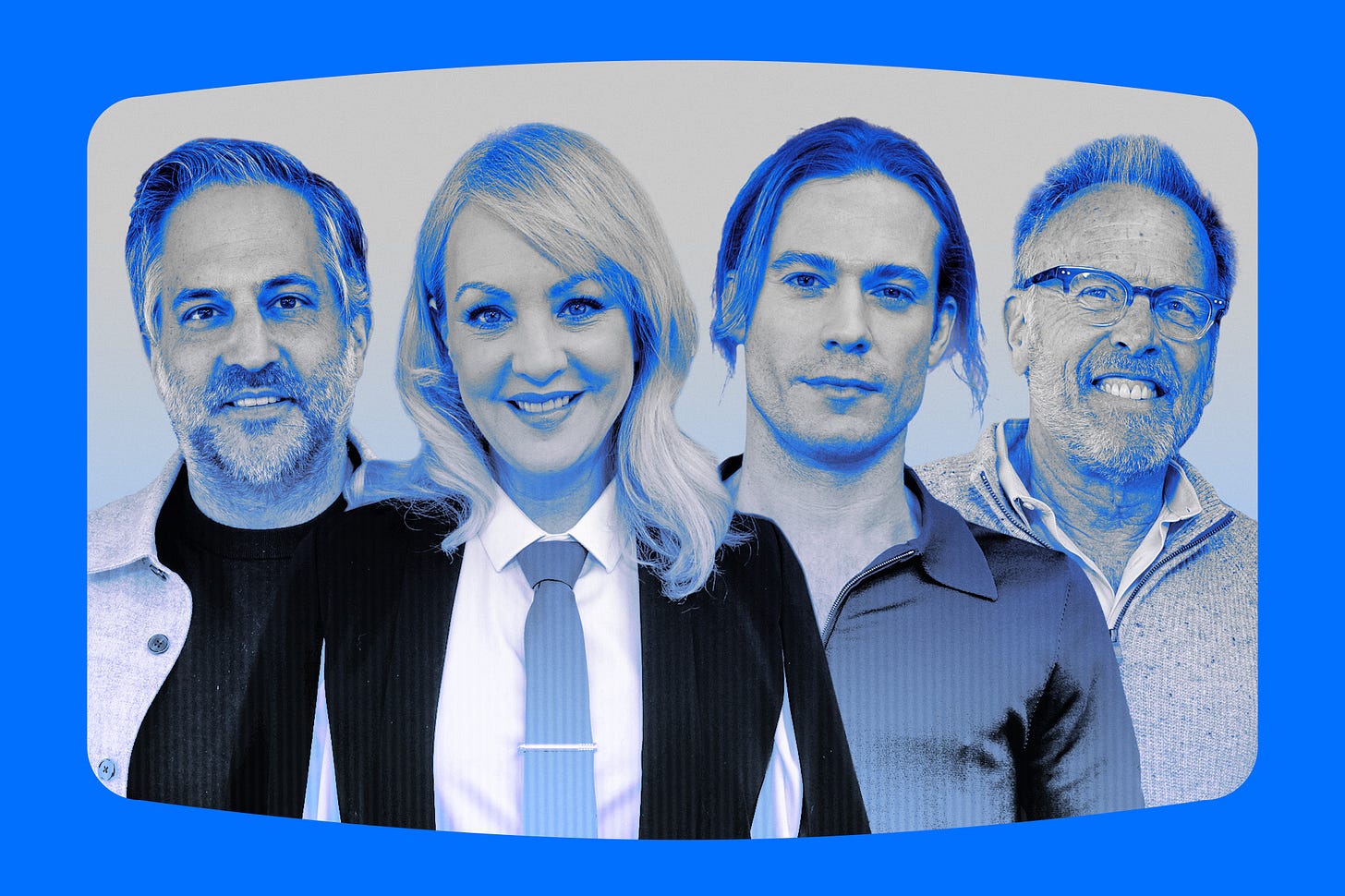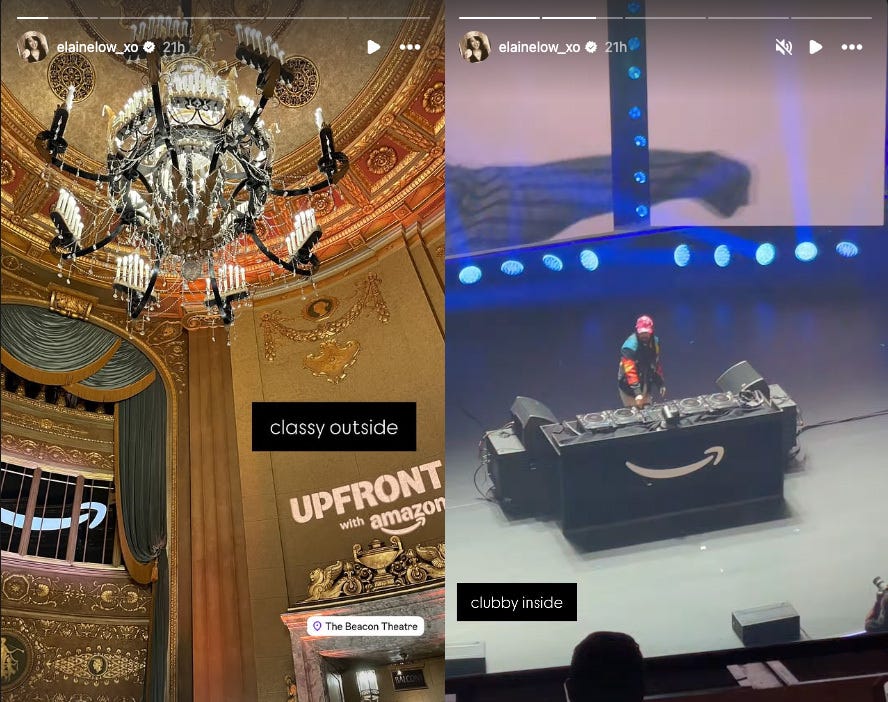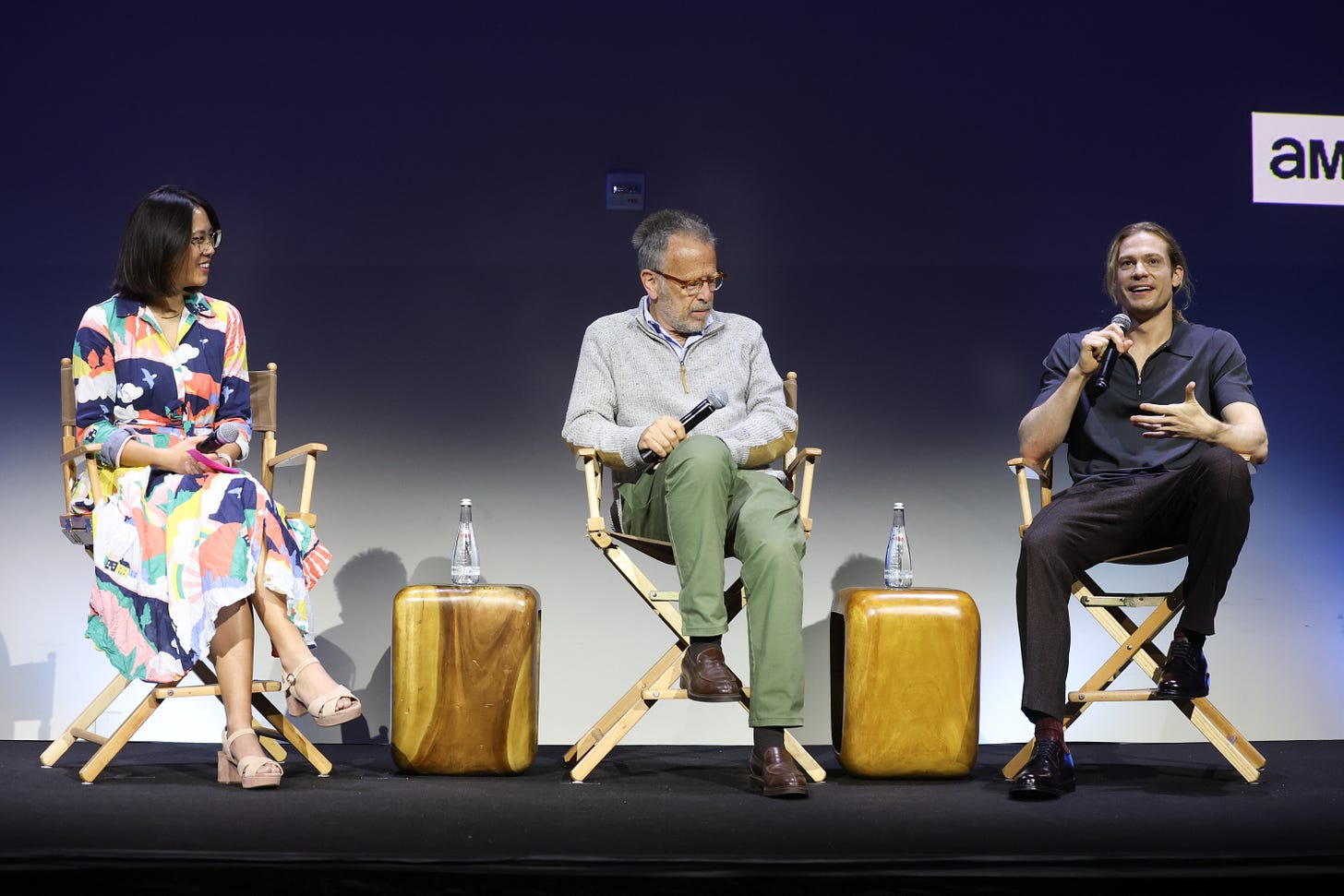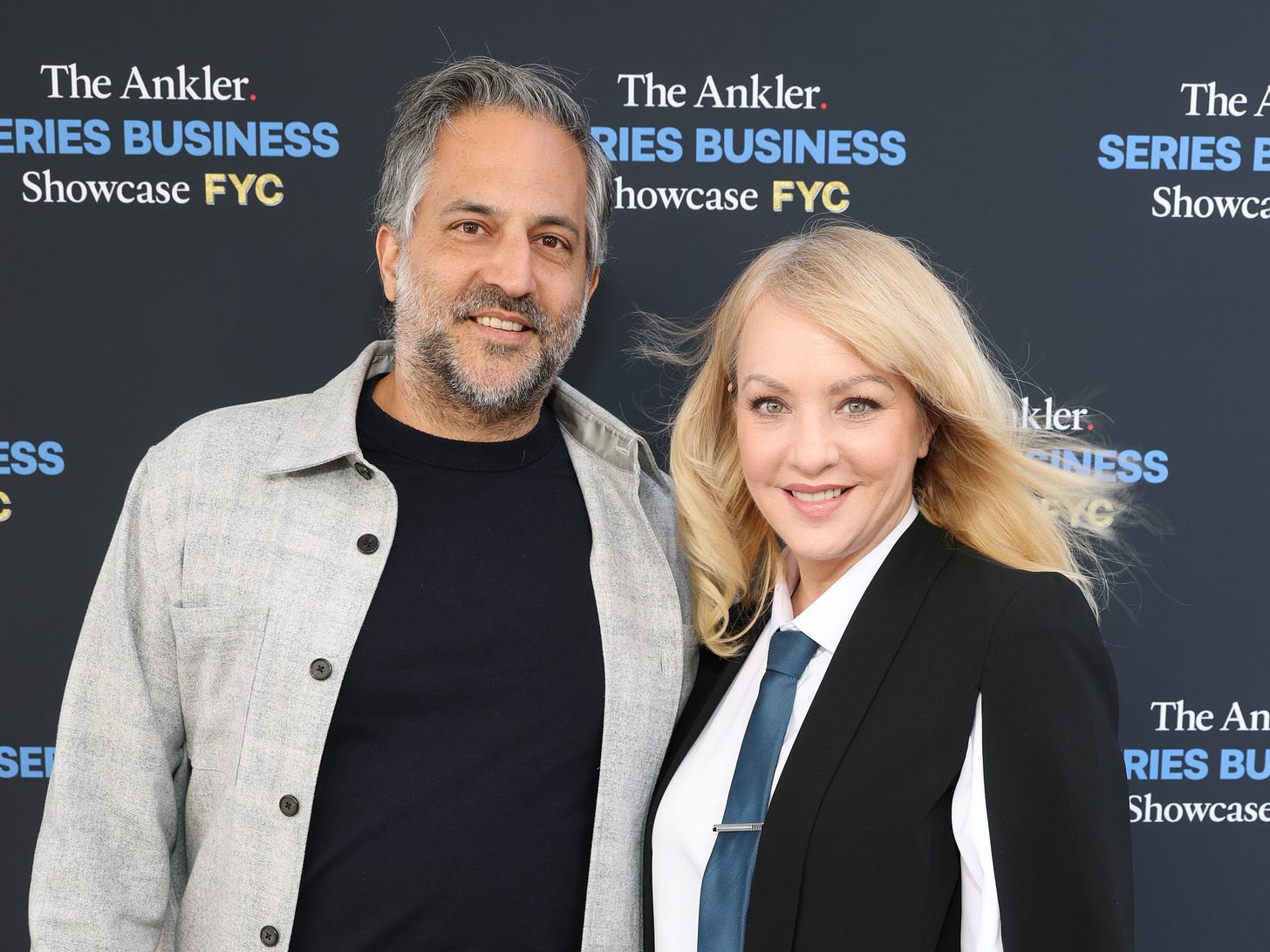Bloody-Good TV Worlds: Inside 'Vampire' and 'St. Denis Medical'
From Anne Rice’s dark mythos to a mock-doc in a chaotic ER, showrunners and stars explain how to make distinctive series in a shifting TV landscape

As a paid subscriber to Series Business, you’ll receive dispatches from Elaine, Lesley Goldberg and Manori Ravindran on the TV business. This is a standalone subscription separate from The Ankler. For access to Series Business and everything The Ankler publishes, including Sean McNulty’s The Wakeup and Richard Rushfield, subscribe here.
Hello again from the Upfronts — bet you didn’t expect to hear again from me so soon. I’m here in New York City, and I’ll have thoughts to share soon about the presentations from Amazon, Disney and more.

Today is a bonus missive, coming out of our Series Business FYC Showcase last month (sponsored by AMC, FX, Netflix, NBC and Paramount+), which packed the room at Neuehouse in Hollywood. My colleague Katey Rich wrote Monday about her sit-downs with stars, directors and showrunners (plus Peter Berg’s dog) from Yellowjackets, American Primeval and Dying for Sex — and in the spirit of isn’t-it-nice-to-hear-about-great-things-getting-made-today, I’m bringing you highlights of my conversations from the event with creatives from Interview with a Vampire and St. Denis Medical. You can catch full videos of all five conversations on AnklerEnjoy — and make sure to see the answers about reasons for hope and optimism in the industry.
Interview with a Vampire: Mark Johnson + Sam Reid

I had never read the original Anne Rice novels but sank in deep into the AMC version of the vampiric tale, which flips from dark to comic to absurdist all in a matter of minutes. Now in its second season, the show is a core component of the Rice television universe since AMC acquired the rights to her iconic novels five years ago. Adapted series so far include Mayfair Witches and the upcoming Talamasca, under the shepherding eye of exec producer Mark Johnson, who previously produced Breaking Bad and Better Call Saul for the cabler (now also streamer).
Rice’s novels serve as the source material for the constellation of series, but Johnson seeks to build out distinct worlds with each series. For Vampire, he teamed up with veteran writer Rolin Jones — a “genius,” says Johnson — who is known for showrunning Perry Mason and whose other credits include Friday Night Lights, Boardwalk Empire and Weeds.
Jones “somehow was able to take his interpretation of Anne Rice, still stay faithful to Anne Rice and come up with something completely new,” Johnson said on stage, calling the adaptations “a great franchise for me, and I think for the artists, in that each series of books is different from the others, so there’s very little in common between these shows.”
For star Sam Reid, playing the iconic Lestat de Lioncourt — a role once inhabited by Tom Cruise in 1994 — comes with a lot of pressure. Still, “I’ve grown to love it,” he says. And playing a vampire who often uses telepathy means having to act each scene twice over: once on screen, without words, and once in a recording studio, to capture the thoughts he is transmitting.
“It’s really, really hard,” Reid said. “It’s like a classic Rolin Jones: ’Here’s two things to do at the same time,’ or sometimes four things to do at the same time if you’re like, flying or dancing around at the same time. The first season with the telepathy was really challenging. Coming back to it in season 2, I had come up with quite a hare-brained scheme to make it easier.”
That scheme involved recording the telepathy part of the script first then listening to it through a discreet earpiece while filming the wordless scene in front of the camera.
“You’re hearing the conversation playing in your head so you know when to hit the beats or when you’re looking,” Reid explained. “That has helped. It does send you a little — I want to say, schizophrenic — slightly mad because you are kind of feeling two worlds in your mind. But that’s turned out to be the easiest way to have a whole scene.”
For all its bloodshed and relationship drama, Interview With the Vampire is actually quite comedic, leaning into camp every once in a while to heighten the contrast between the supernatural and the serious.
“Tone is a really complex thing to get right in this show, because it is actually funny,” says Reid. “I think it’s a comedy, personally.”
That can be tricky to translate in the performance and requires a lot of conversations with Jones, who has a specific way of setting tone — playing a certain piece of classical or jazz music to suit each shoot.
CAUSE FOR OPTIMISM: “In times of great adversity, extraordinary art has appeared from it,” Reid said. “The arts do communicate with people in a way that allows them to see themselves in a place that they might not have imagined previously. Art can help us build new things.” Added Johnson, “Our most romantic impulse is to be told a story or to tell a story. And stories are going to continue.”
St. Denis Medical: Eric Ledgin + Wendi McLendon-Covey

Speaking of comedies, I also spoke with St. Denis Medical star Wendi McLendon-Covey and exec producer and creator Eric Ledgin (Superstore), whose NBC mockumentary reminds us that very funny things often happen in very serious places.
“I felt like there was something about finding moments in an emergency room — largely when you watch them on TV, they’re super dramatic and there’s a lot happening at all times,” Ledgin said. “But in these smaller hospitals, there are humdrum moments, real moments — you know, moments that feel very workplace, even though they’re in this very high-stakes environment.”
While Ledgin has two decades as a TV writer under his belt, this is his first gig as showrunner. “It's a really full-time — and I mean like waking up in the middle of the night going like, ‘Oh, actually this is a better way to end that C story’ — type of job,” he said. “Now that we’re getting into the second season, I’m a little more ready for this sort of all-encompassing challenge of it. It's just everything from thinking about the arcs of the characters for the season to breaking the stories with the writers — and then sometimes you're wrestling with one joke for several hours because you want to get it exactly right.”
There were also challenges in store for McLendon-Covey, who plays the well-meaning but bumbling healthcare administrator leading the cast of characters. During the filming of the St. Denis pilot, she was still on a farewell tour for her decade-long stint on The Goldbergs, she explained, and it was initially tough acclimating to a new crew. “I really felt like I was cheating on my family,” she said.
“As far as finding a rhythm, I think what united us all together was the fact that we are supposed to be saving lives, you know?” McLendon-Covey continued. “So let’s stick to what the script is doing, and personality-wise, we will make it work because we love being here.”
Having worked on broadcast shows such as American Auto and Late Night With Jimmy Fallon, as well as cablers including The Pete Holmes Show and streaming series like Rutherford Falls, Ledgin keeps coming back to good old linear programming “not because business was booming, but because it felt like I just got so much joy out of that process,” he said. “You get to be part of every part of it. Even when I was a writer on Superstore, Justin Spitzer, who was running that show, was putting me in the edit bay, and I was always on set for my episodes, and I really got to learn every part of it. There’s just something really wonderful about collaborating with people and all being on this team together. I’m grateful for broadcast TV. I love it. I’m happy that people are still enjoying it.”
CAUSE FOR OPTIMISM: Both star and creator echoed Johnson’s sentiment that stories will never go out of style. “Industries go through up and downs, and I’ve been in it long enough to be around for some of those ups and downs, but nothing will change the fact that there will always be a huge marketplace for good stories well told,” Ledgin said. “Those stories are always going to be in demand and continue to be made. And because most of the best people in the world who do those things come to Los Angeles, they’re going to continue to be made here.”




